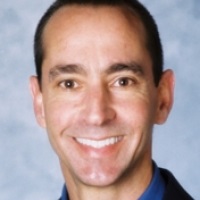

From the Hayes Healthcare Leaders Blog Series (@HayesManagement)
By Chuck Deckert, VP, Health Information Technology Solutions, Sharp Healthcare &
Neil Treister, MD, MBA, Medical Informatics Officer, Sharp Healthcare
As payment for healthcare services continues to shift from fee-for-service to value-based care, significant decisions loom for physician-based groups and other healthcare organizations.
Sharp Community Medical Group (SCMG), is a physician-owned independent practice association (IPA) affiliated with Sharp Healthcare in San Diego. We believe that the clinical integration of HIT systems is the most effective path to address the inevitable payment shift and facilitate effective population health management. To that end, we are considering several HIT initiatives, the most promising involving a shared platform solution.
Driving consolidated managed care
SCMG, founded in 1989, was formed to help provide contracting and operational services to our independent member physicians in what was becoming a highly consolidated managed-care environment. The group provides HMO contracting, referral management, case management and other related services to our approximately 250 primary care and 500 specialty providers. SCMG contracts with a number of commercial and senior health plans for HMO lives. In conjunction with Sharp Healthcare, SCMG was an inaugural member of the Pioneer Medicare ACO pilot program and participates in several commercial ACOs.
In 2009, SCMG began a multi-organization, shared deployment of a single EHR across the IPA that currently includes nearly 50% of primary care providers. The implementations have been largely successful with the majority of providers attesting to Meaningful Use stages I and II. However, like many healthcare organizations, we use other applications for referral management, HMO claims, data warehousing, financial, laboratory and pharmacy information. Sharp Healthcare’s four acute care and three specialty hospitals use a separate EHR system as well. Managing information with so many disparate systems provides a significant challenge.
Dealing with legacy system and complexity issues
SCMG faces a number of IT challenges related to our business model and environment. Some of our primary care providers use different EHRs and several still use paper charts. As a result, EHR-based reporting can’t fully meet the needs of the organization. Claims-based reporting captures the HMO and ACO data but can be delayed and is unable to fully obtain some of the clinical data normally residing in an EHR.
As the complexity of our business model has increased, so has our need for more robust analytic and reporting capabilities. It’s clear to us that reporting should be focused on the various managed care contracts looking at cost, efficiency, and quality metrics. Managed care-based reporting is essential when it comes to our Advanced Primary Care Practice initiative, to the development of our High Value (narrow) Network, and to support the value-added proposition when contracting with health plans and employer payers. That sometimes conflicts with the individual practice’s perspective: doctors need to know about their entire population to support quality improvement, improve patient satisfaction, and drive other initiatives for their entire patient population.
Clinical integration through a shared platform may be the key
We believe that solving these problems and facilitating a successful transition to value-based care requires the development of a clinically integrated network that coordinates patient care among all members of the care team. The technology platform must support the aggregation of clinical and business data from across the care continuum. This would give us a more complete view of the patient’s medical record, help us analyze clinical data, and allow us to take action on the information. Getting to a shared workflow throughout all care settings will ultimately improve the quality and delivery of patient care.
We believe the best way to accomplish this critical integration may be through the adoption of a shared platform across the outpatient and inpatient settings. We are currently working with a number of internal stakeholders to evaluate making a transition from our current EHR to a single “shared platform” IT strategy.
A shared platform solution will create efficiencies across various care teams and reduce the time spent requesting and sharing information. This approach will make workflows more uniform across the enterprise, ensure more seamless transitions of care, and reduce the chances that important information will be missed. A shared platform will also decrease process redundancy – especially in the areas of training and support of software upgrades. Most importantly, a single enterprise master patient index will help mitigate the challenges surrounding patient matching and duplicate charts that occur when transferring information from hospital to the ambulatory record.
We’ve identified four key success factors to consider as we assess the move to a shared platform with Sharp Healthcare.
- The governance model must support the shared vision of clinical integration and a population-based management approach and balance the needs of the hospital with those of the physician group.
- Effective population management can only occur if all SCMG primary care physicians use the EHR. Integrating disparate EHRs or extracting “semi-clinical” data from claims will not be sufficient to provide integrated care. Encouraging the participation of physicians not currently on SCMG’s EHR will require a combination of incentives and penalties.
- The new EHR system must be able to support some of the specialized revenue cycle management workflows and HCC coding initiatives currently supported by the existing practice management application and EHR.
- The current patient portal solution must either be replaced or integrated with the new system to seamlessly integrate the existing Sharp patient portal with the platform. This capability currently doesn’t exist and the gap could potentially undermine the key goal of achieving effective patient engagement and meeting Meaningful Use objectives.
The shared platform approach has potential drawbacks, especially involving decisions about how much information to convert from the existing EHR and how to address the loss of productivity and resistance of current EHR users who have invested years becoming proficient with the current product. As is often the case, a shared platform may require compromises in certain functionalities where the platform solution is not as well suited to existing workflows as the “best of breed” applications.
Sharing the platform across Sharp Healthcare will necessarily increase the complexity of decision-making and change a number of SCMG’s current application and hosting relationships. Despite these challenges, we still believe a shared platform approach should offer the best chance of success as the entire system moves from FFS to value-based reimbursement models.
There is more work to be done before we make a final decision. In addition to the detailed and complex IT considerations currently being investigated, strategic, cultural, financial and other factors must be thoroughly evaluated. Due diligence and extensive stakeholder discussions are ongoing and we expect to make a final decision in the next few months.
This article was originally published on Hayes Management Consulting and is republished here with permission.
